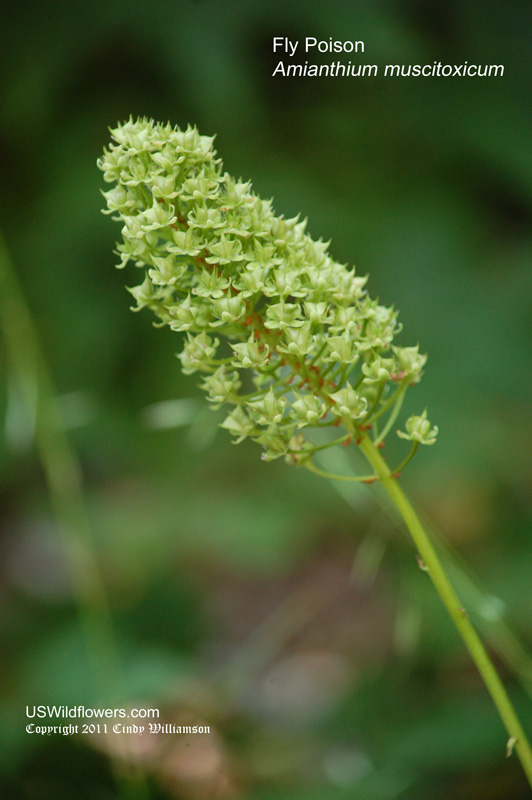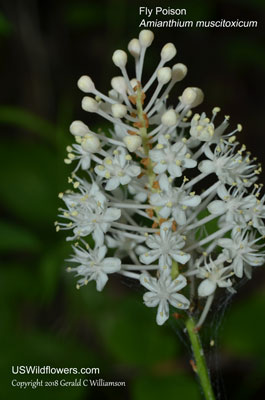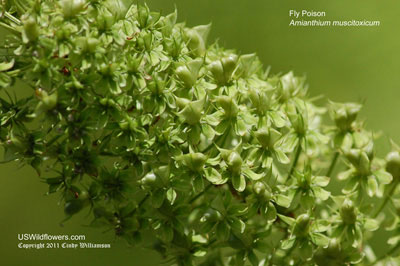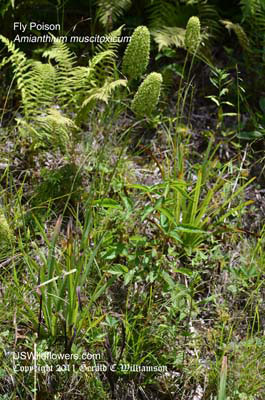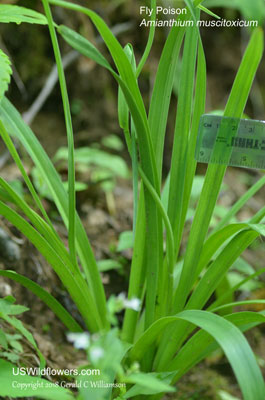Wildflowers of the United States | |||||||||||||
| |||||||||||||
Amianthium muscitoxicum - Fly Poison, Stagger Grass. Amianthium muscitoxicum is monotypic - this is the only species in the genus, although it is closely related to Death Camas (Toxicoscordion, Stenanthium, Zigadenus, Anticlea), from which it can be distinguished by the brown bracts within the inflorescence, and by having a denser cluster of basal leaves. These genera have been recently moved out of Liliaceae and into the Melanthiaceae - False-Hellebore - family | The species epithet translates to Fly Poison, indicative of the poisonous nature of the plant. All parts are poisonous. The bulb, which is especially poisonous, is a natural insecticide, but in spite of that, some butterflies eat the nectar of the plant without adverse effect. The alternate common name of Stagger Grass is because cattle which eat the plant will stagger, and then perhaps die, from the effects of the poison. Amianthium muscaetoxicum is an alternate spelling of the scientific name which is not accepted by most authorities. Zigadenus muscitoxicus is a synonym, indicating the close relationship to the genus by which most Death Camas have been classified until recently. It is Threatened in Kentucky. Found in: AL, AR, DE, FL, GA, KY, LA, MD, MO, MS, NC, NJ, NY, OK, PA, SC, TN, VA, WV Leave comments on Amianthium muscitoxicum at this link.   Map courtesy of The Biota of North America Program. Map color key Search Our Database: Enter any portion of the Scientific, Common Name, or both. Do a general Google search of the entire site: #ad #ad
| #ad
| | ||||||||||
|
Commercial / Cookie Notice Looking for Wildflowers for a specific state? Check here: | |||||||||||||
|
All content except USDA Plants Database map Copyright Gerald C. Williamson 2024 | |||||||||||||
Code Update 20230302

